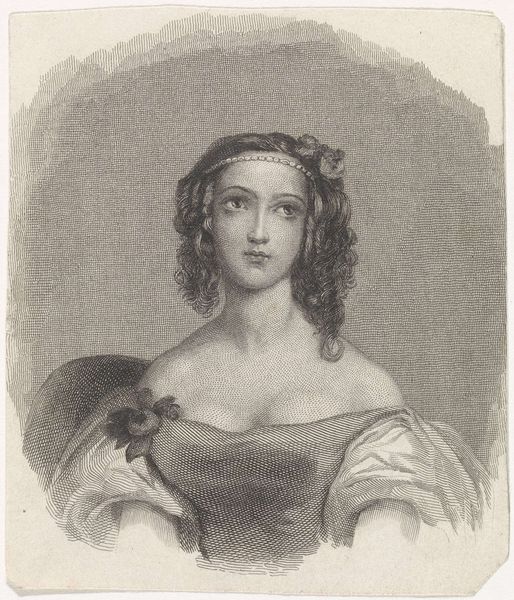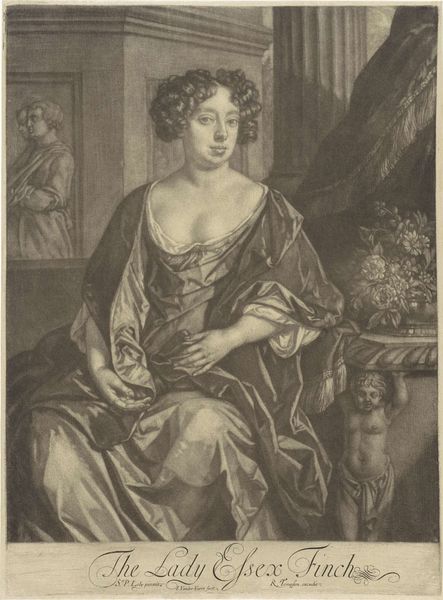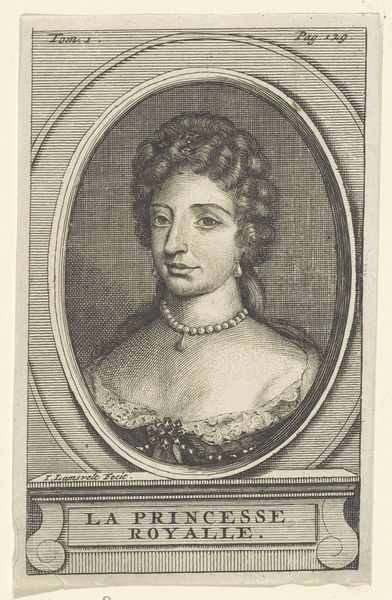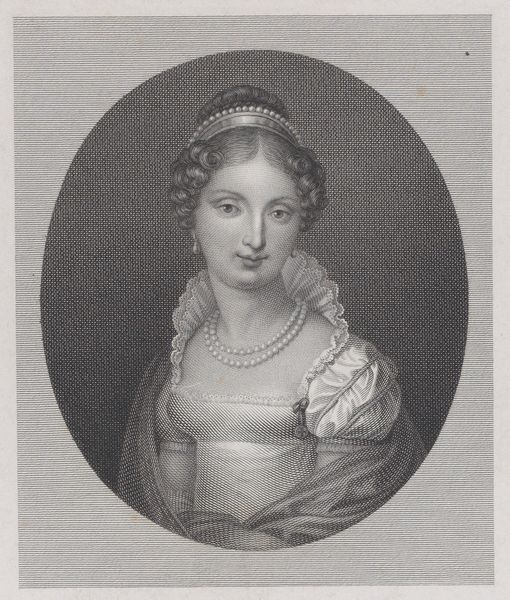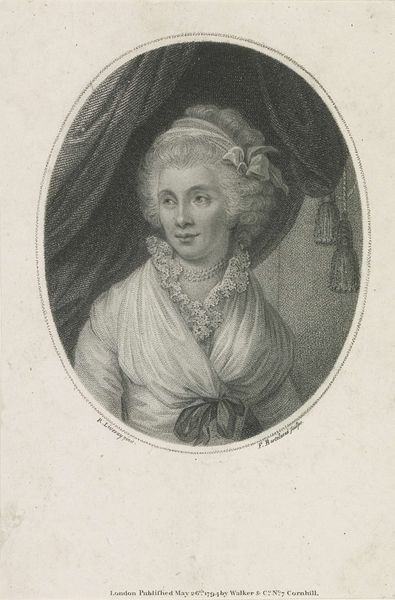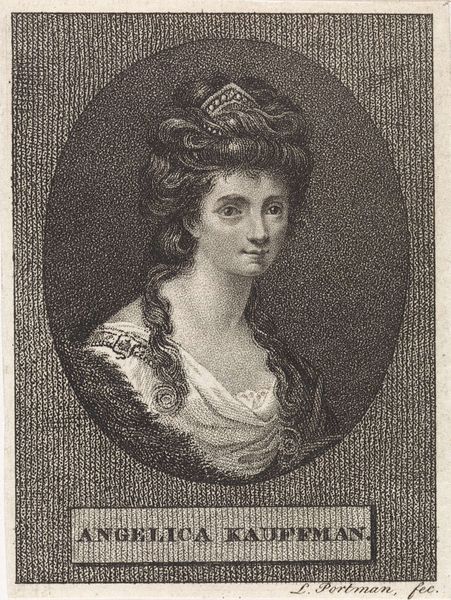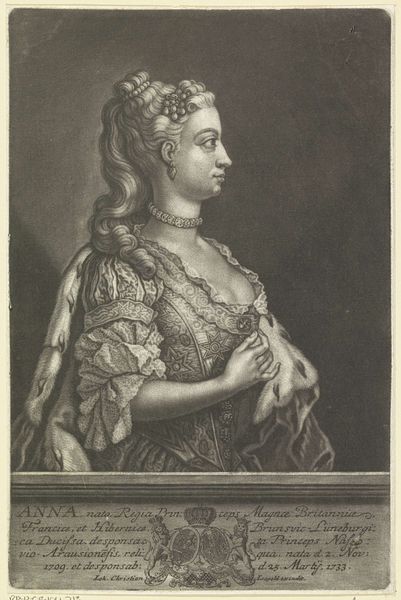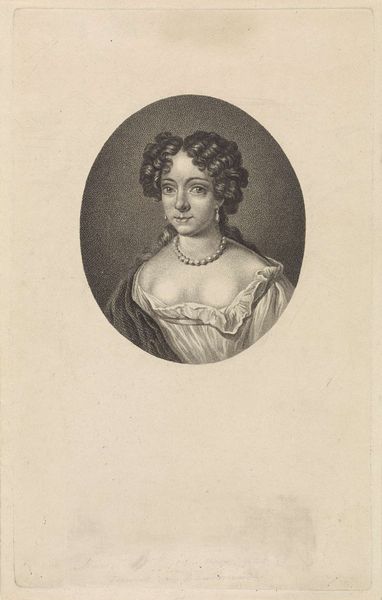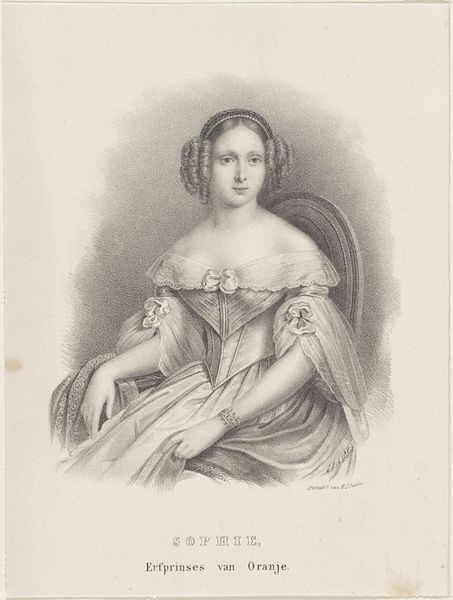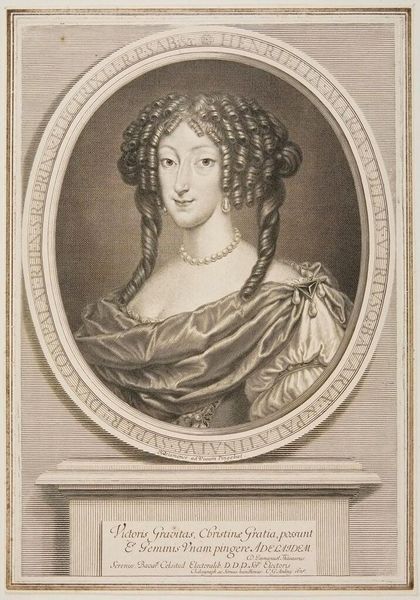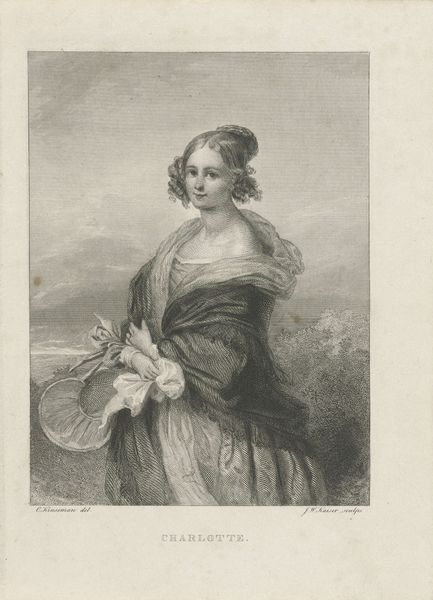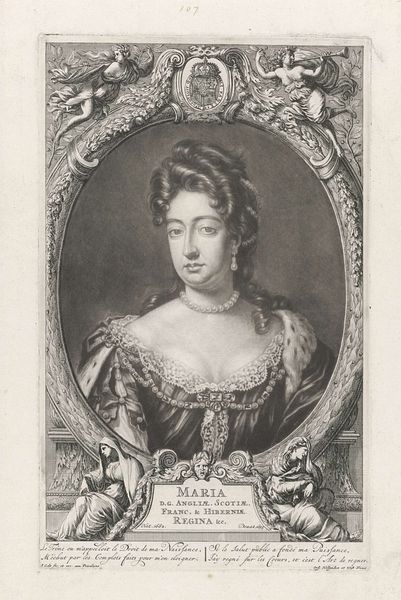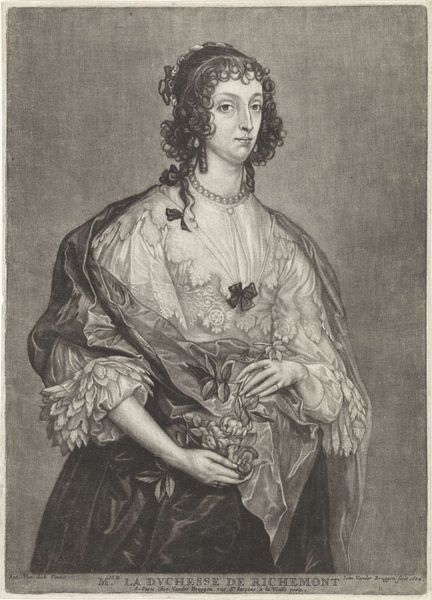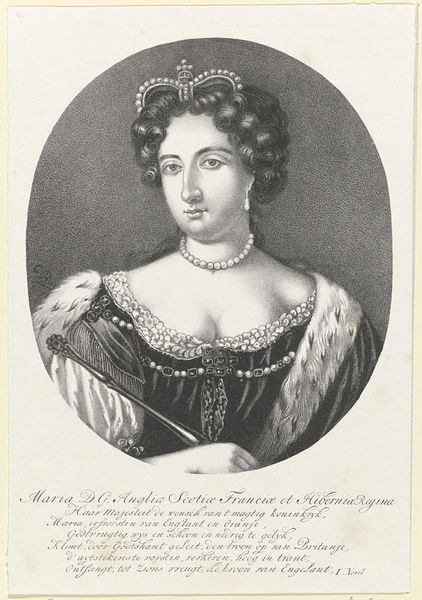
Dimensions: height 129 mm, width 85 mm
Copyright: Rijks Museum: Open Domain
Curator: Let's turn our attention to "Portret van Pauline van Württemberg," a piece attributed to Johann Nepomuk Passini, created sometime between 1829 and 1874. It appears to be an engraving, primarily on paper. What are your initial impressions? Editor: It evokes a strong sense of craft, doesn’t it? The texture of the engraving, particularly in the rendering of her fur stole and the landscape backdrop, speaks to the intensive labor involved. Curator: Absolutely. Observe how Passini meticulously builds form through a complex system of lines, creating volume and shading. It is quite remarkable the illusion of depth achieved via such a medium. The stippling technique gives softness to the face while linear strokes describe her drapery. Note also the semiotic function of the landscape—indicative of Romanticism's penchant for associating individuals with natural grandeur. Editor: I’m more interested in what this says about portrait production in that period. Engravings like these weren't singular artworks, but means of wider distribution. What workshops were involved? Who was purchasing these portraits, and why? Curator: An important point. Indeed, such engravings allowed for wider dissemination of aristocratic likenesses, reinforcing social hierarchies. And in this representation, we can dissect elements of Idealism juxtaposed against a tangible humanity in the eyes and gentle smile. Editor: Exactly, and what does it mean to reproduce nobility? What labor practices upheld these traditions and created demand? Looking closely, you see a product created to perpetuate societal structure as much as reflect an individual's appearance. Also, feel the texture through visible hatched and cross-hatched lines—this contrasts dramatically with more finished oil portraits typical of the upper classes. Curator: Fascinating perspectives! We can discern elements beyond straightforward mimesis—deliberate aesthetic choices designed for visual impact. These aesthetic qualities help transmit messages regarding status, elegance and power via codified visual language common within artistic circles. Editor: This work connects us not just to Pauline but also to the complex world of print production, market forces and social standing during the period—material connections that illuminate how such imagery was manufactured, circulated and consumed. Curator: A perfect synthesis! By examining formal attributes in combination with these socioeconomic considerations—we gain profound appreciation and expanded context about function/purpose. Editor: It bridges the world represented in the artwork with the often-unseen world of its creation and dissemination.
Comments
No comments
Be the first to comment and join the conversation on the ultimate creative platform.
